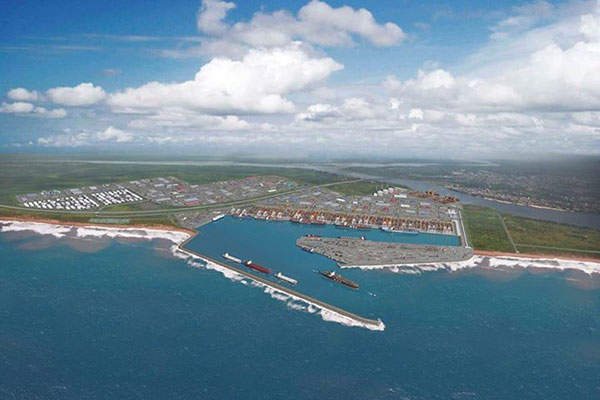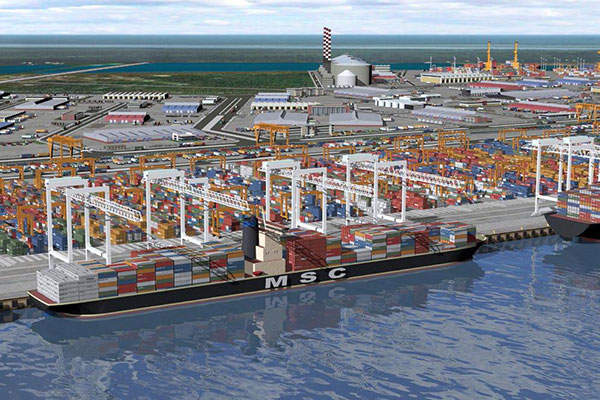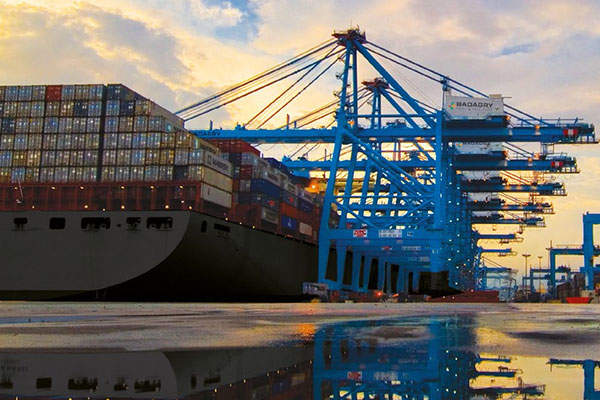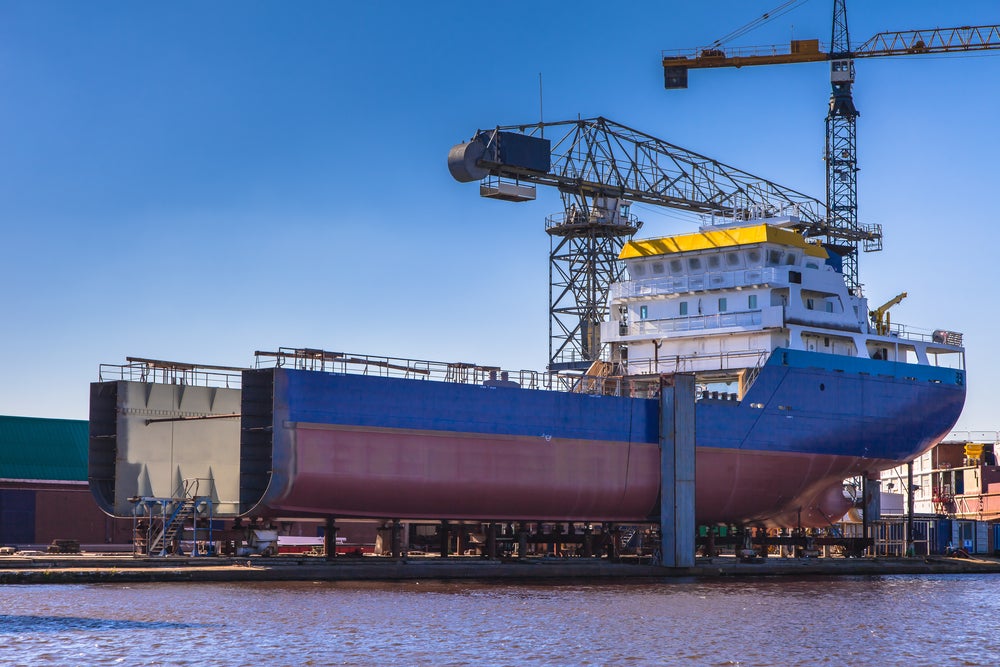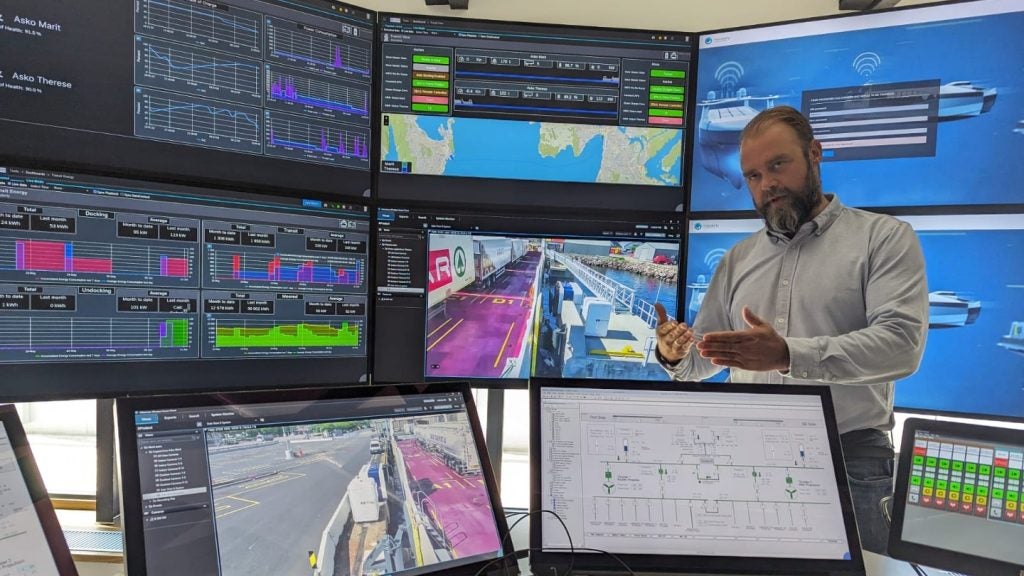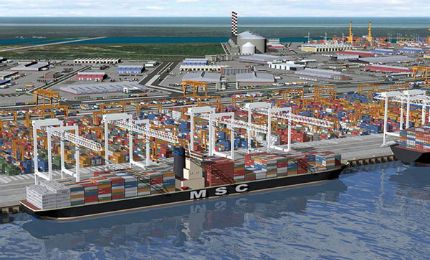
The Badagry MegaPort and Free Zone project, proposed to be constructed at Badagry, Lagos State, Nigeria, will be Africa’s biggest and most advanced sea port when it starts operations in 2018.
The new port is expected to have an annual throughput capacity of 1.8 million TEU.
The project is being developed through a public-private partnership (PPP) overseen by the federal government, federal Ministry of Transport, federal Ministry of Trade and Investment and Lagos state government.
It is also being overseen by a private consortium of APM Terminals, Orlean Invest, Oando, Terminal Investment Limited (TIL) and Macquarie.
The proposal for the project was announced in 2012. Feasibility studies have been completed and construction works are scheduled to start in early 2016. The project will be implemented in four phases, with the overall project cost estimated to range between $2bn and $3bn.
Badagry port location and purpose
The proposed site is located 55km west of Apapa and the port of Lagos, along the 55km long Lagos-Badagry Expressway, that is being upgraded from a four-lane to a ten-lane expressway.
The new port will primarily ease pressure on the existing port of Lagos, which handles approximately 85% of the country’s non-oil throughput.
It will further alleviate the country’s ports, which are on the verge of exceeding their cargo handling capacities, and address the country’s annual container traffic, which is expected to grow to ten million TEU by 2030.
Details of Africa’s biggest port project
Cape Town’s port enjoys strategic and economic importance due to its location on the South Atlantic route, one of the world’s busiest trade routes.
The project will primarily involve the construction of a main container and a general-purpose terminal (GPT), an offshore (oil and gas) supply base (OSB), as well as a refined products terminal.
It is touted to become Africa’s first automated port and will be equipped with state-of-the-art cranes and cargo handling facilities.
The container terminal, with a quay length of 2,490m, will cover an area of 149ha and is designed to accommodate the18,000 TEU Triple-E class container vessels.
An initial phase of the project will involve the development of approximately 46ha of the terminal area, with a quay length of 775m, designed to accommodate the 12,000 TEU Emden class container vessels.
The initial phase of the GPT development will provide a berth area of 12ha, with a quay length of 325m, capable of handling 265m long vessels. The facility can further be expanded in later phases to provide an ultimate berth area of 27ha, with a quay length of 775m.
Phase I of the OSB will provide a berth area of 12.5ha and a quay length of 250m, which will be increased to 50ha and 1,700m respectively in later phases. The facility will be capable of handling vessels of up to 250m in length.
A refined products terminal will initially feature a jetty, up to 80ha of tank farm space, storage capacity of approximately 210kT and an annual throughput capacity of 100,000 barrels a day.
Storage capacity will increase to 630kT, the number of jetties will be increased to two or more and the terminal area will increase to 360ha in later phases.
The initial design depth for the container terminal is -16.5m below chart datum (bCD), -13m bCD for the OSB, -15.3m bCD for the refined products terminal and 14.5m bCD for the GPT.
Berths will be provided with scour protection at their maximum design depth.
Integrated Badagry Free Zone (BFZ) and ancillary infrastructure
The integrated free zone, situated on the northern part of the project area, will primarily cater to light industries, heavy manufacturing and petrochemical sectors. It will further feature a power plant and bulk liquid storage facilities.
The project will also involve the construction of a logistics park, residential buildings and a light rail transit system to connect the port with the rest of Lagos state.

